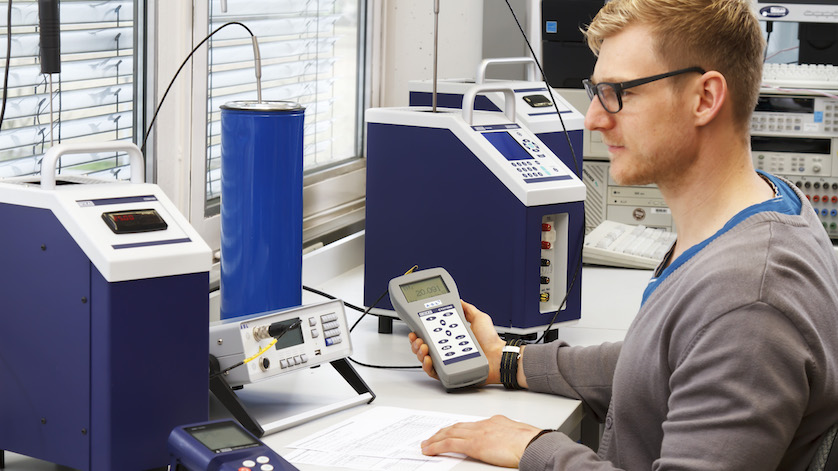
All measuring devices lose accuracy over time. Therefore, reliable readings require a regular schedule of calibrations. The particular conditions and needs of each application will determine when it is time to recalibrate a measuring instrument.
Time isn’t kind to the human body, nor to measuring instruments. Industrial thermometers, pressure gauges, and other devices are subject to a variety of stresses – mechanical, chemical, thermal – which take their toll.
But even though nothing lasts forever, regular tuneups not only can prolong a device’s lifetime, but maintain its high level of performance. Regular checks and recalibrations help industrial plants get the most out of measuring equipment.
When to Recalibrate
Accuracy verification and calibration are normally performed on these occasions:
- Before installation (factory calibration)
- During preventive maintenance
- During scheduled shutdowns
- Annually during an audit
WIKA’s recommendation for a calibration check and re-certification is once every 12 months. However, the frequency for a calibration check of a measuring instrument depends on many factors:
- What are the operating conditions of the instrument?
Is the instrument exposed to significant shock, pulsation, vibration, and other mechanical stresses? Does it regularly undergo large fluctuations in pressure or temperature? Such conditions can reduce an instrument’s accuracy over time, but more frequent calibrations can mitigate the effects.
2. How important is the process and the parameter been monitored?
Is the instrument used in a critical process? In other words, will the entire application suffer if the industrial gauge, indicator, or thermometer does not perform within certain limits? Will plant or product safety be compromised by even small deviations in accuracy? If so, frequent calibrations can prevent problems. The associated downtime and expenses are negligible compared to the errors that could lead to batch contamination, tank leaks, plant explosions, and so forth.
In general, regular instrument calibration will:
- Improve product quality.
- Increase process safety.
- Boost confidence in the measuring device.
- Prevent rejects and discards.
- Ensure compliance with standards and guidelines.
WIKA USA’s Calibrating Capabilities
WIKA USA has a full-service, ISO 17025 accredited lab that calibrates pressure, temperature, current, voltage, and resistance. We can provide accuracy certificates of compliance, customized calibration test reports, calibration certificates with values listed, and calibration test certificates as per ISO 17025.
Calibration standards can be traced back to the appropriate country national standard, including:
- USA – NIST (National Institute for Standards and Technology)
- Germany – PTB (Physikalish-Technische Bundestanstalt)
- Switzerland – METAS (Swiss Federal Institute of Metrology and Accreditation)
- Poland – GUM (Central Office of Measures)
- China – National Institute of Metrology
- India – NPL (National Physical Laboratory)
For extra convenience, WIKA’s Calibration and Service Center can perform calibrations at the point of use. We also design fully automated calibration systems for laboratory and production applications, and hold seminars so our customers can learn more about why, when, and how to calibrate instruments.
Contact our product experts for customized advice on how often you should be calibrating your measuring instruments.


Well written content like this restores my faith in quality writing. I finally found information I can agree on and use. This is great content. Thanks for sharing this good content.